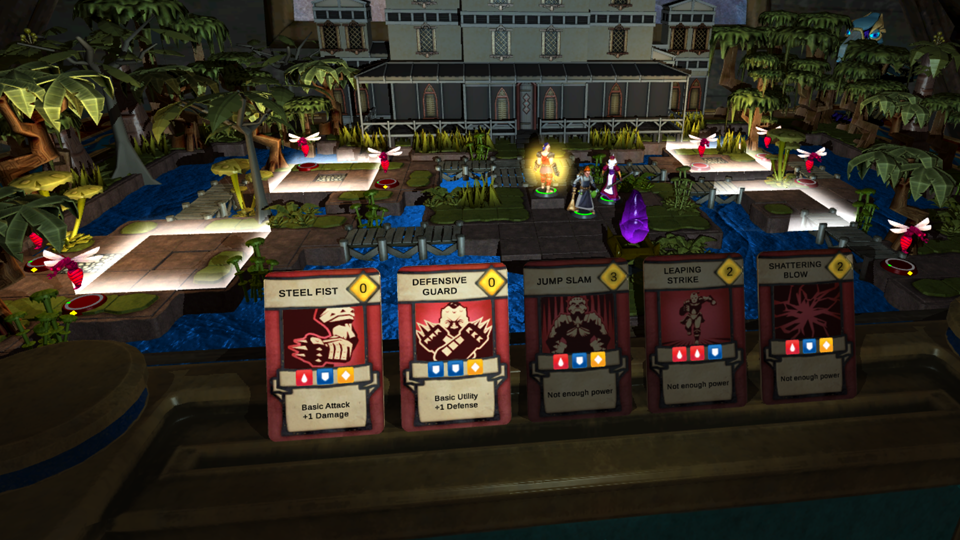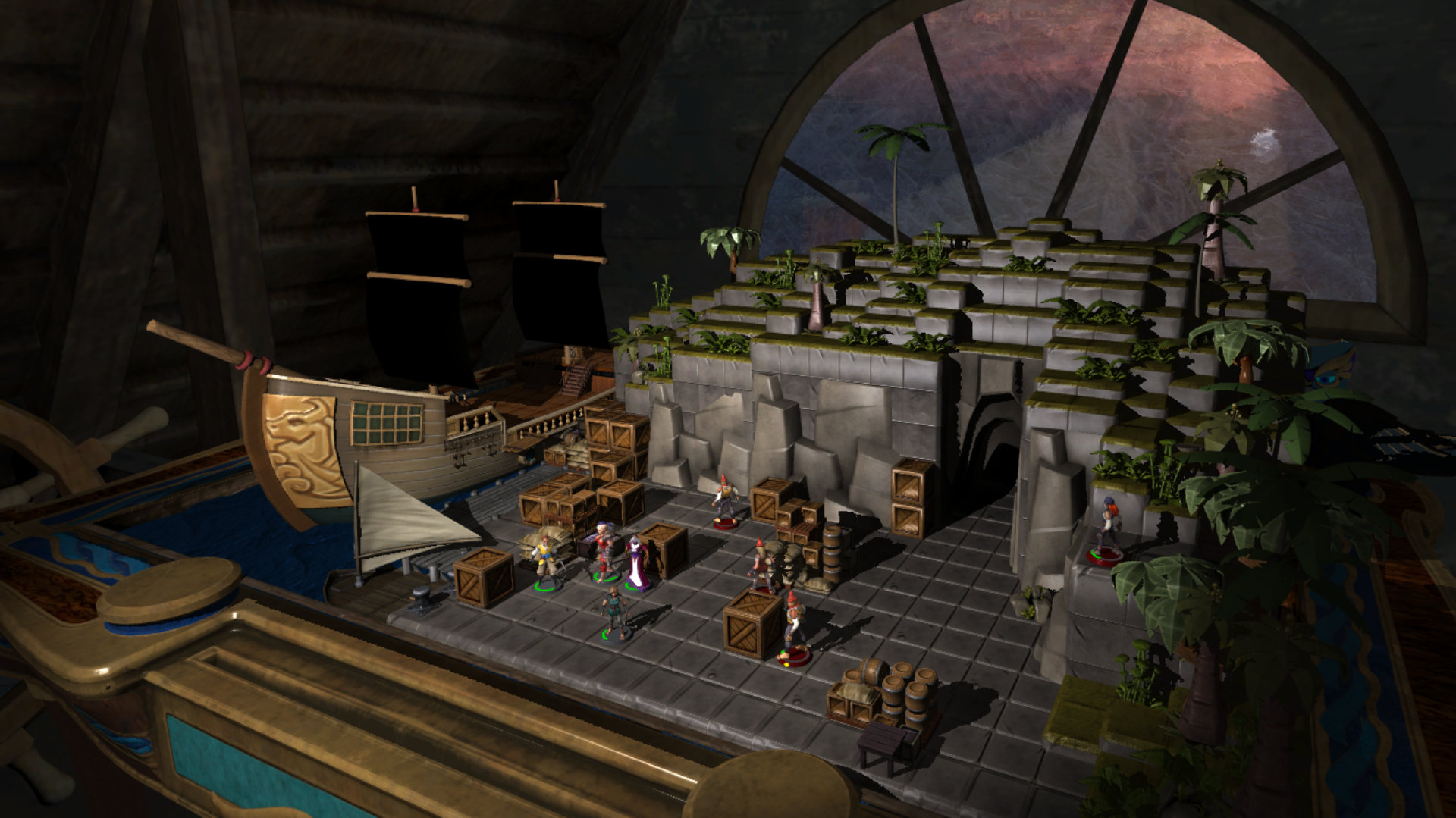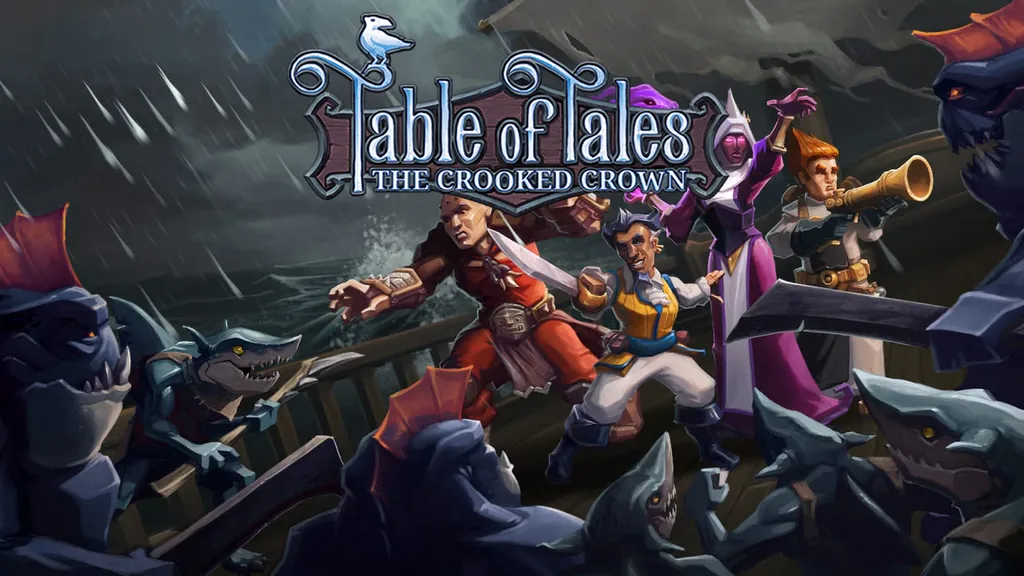The magic of VR has taken us into the far reaches of unexplored space, and the darkest depths of our oceans. The prospect of spending an entire game sitting in front of a table in your aunt’s attic, therefore, may not fill you with boundless excitement. But! This is no ordinary table. Besides, if you look up from the virtual table in front of you at any time, you can see a rather beautiful sunset through the frosted glass window.
The eponymous table is the stage for a tabletop RPG. No need to worry about spending weeks of frustration trying to sync the schedules of a group of players for this one, though. The action literally unfolds before you by itself including the environments, characters, and props rising and falling from the table as the story progresses (a bit like the Game of Thrones intro sequence). Narration meanwhile is provided by a mechanical bird by the name of Arbitrix, who acts as the Game Master. I suspect she’s meant to sound like a pirate; but to British ears, she sounds more like a farmer.
Each character is a semi-animated game piece. You play the game much as you would a real-life board game, something that never loses its appeal. Action is turn-based and on your turn you reach down to the table, and pick up the character you want to use. Place them where you want them to go if needed, then choose their action. This is done by selecting one of a small number of cards on the edge of the table, and confirming by touching the character with the card. Simple, yet satisfying. There are (of course) all sorts of people and creatures to slay on your way to the end of the story but, in true tabletop RPG fashion, there are plenty of choices to be made, too.
You’ll regularly be faced with a situation where combat is but one of several options, or may not even be an option at all. This is where your characters’ stats, such as Strength and Charm, come into play. Perhaps you’ll try to charm a character onto your side, or use brute strength to break something in your way. A number of stars above the relevant option shows the total number of points necessary for success, which will almost always be above the capabilities of even your most suitable character. You’ll therefore need to roll the dice – both literally and figuratively – on your action of choice.

There are no ‘wrong’ choices, only alternate paths for your story to take. Although I assume (as this didn’t happen to me) losing all your characters in a fight results in a Game Over, failing a chosen interaction doesn’t bring the game to a halt. It probably means that you’ll have a more difficult fight ahead of you, but the story continues. This is just one way in which Table of Tales enthusiastically encourages repeat playthroughs.
Sure, you can wonder what might have happened if you’d succeeded in that failed attempt. But what if you’d gone for one of the other available options? What if you’d gone done path A rather than path B a few stages ago? What scene would have played out there? That NPC that joined your crew… you lost them in battle. But what if you’d looked after them a little better, and they survived until the end? You failed to convince that character to help you just now, but what if you’d managed to get them to believe you? And so on.

There are so many brief yet interesting avenues for the story to explore, the game stands up extremely well to at least a few extra playthroughs, offsetting the modest playtime of roughly two and a half hours. The members of your motley crew are known as the ‘Scoundrels’, and they certainly lived up to the name in my first run through. Two of my temporary allies died, I betrayed an alliance I’d forged, and left an entire island of people to their deaths. Oops! None of that had to happen, though.
There’s a neat, vaguely Neverending Story or The Princess Bride atmosphere, and moment-to-moment gameplay moves along nicely; but it’s not for everyone. The presentation and storytelling are distinctly kid-friendly (with one odd exception I came across, the use of the word “bastards”). There’s absolutely nothing wrong with that in and of itself, but in this case it means weak and toothless humor and a predictable, often derivative plot. In addition, combat only allows for limited scope when it comes to tactics.
Movement and actions are based on action points, so thinking is definitely required, though the simplicity is a double-edged sword. While some will appreciate the limited number of combat cards, and the fact that attacks never miss, others will doubtless pine for something more complex and deep.
PSVR has really come into its own in recent years, and Table of Tales is a flawed yet unique jewel in its crown. The simple act of playing an animated board game in virtual reality is compelling, strengthened by liberally sprinkling the game with some very clever choices for the player. If you’re looking for something new that emphasizes entertainment over challenge, this is for you.
Table of Tales is available exclusively on PSVR for $19.99. Read our Game Review Guidelines for more information on how we arrived at this score.























